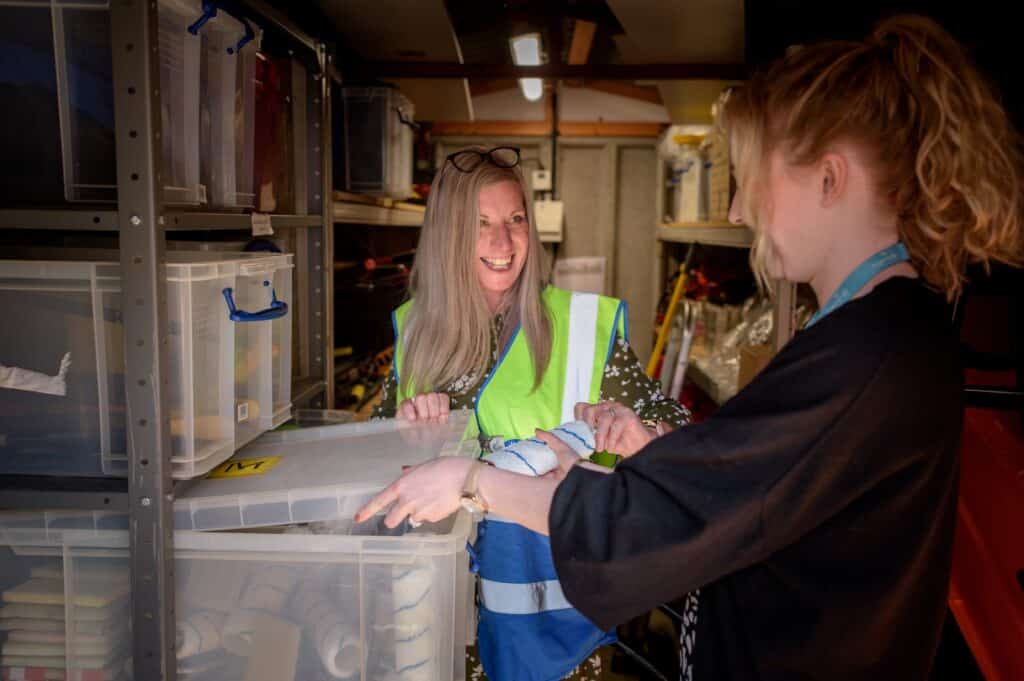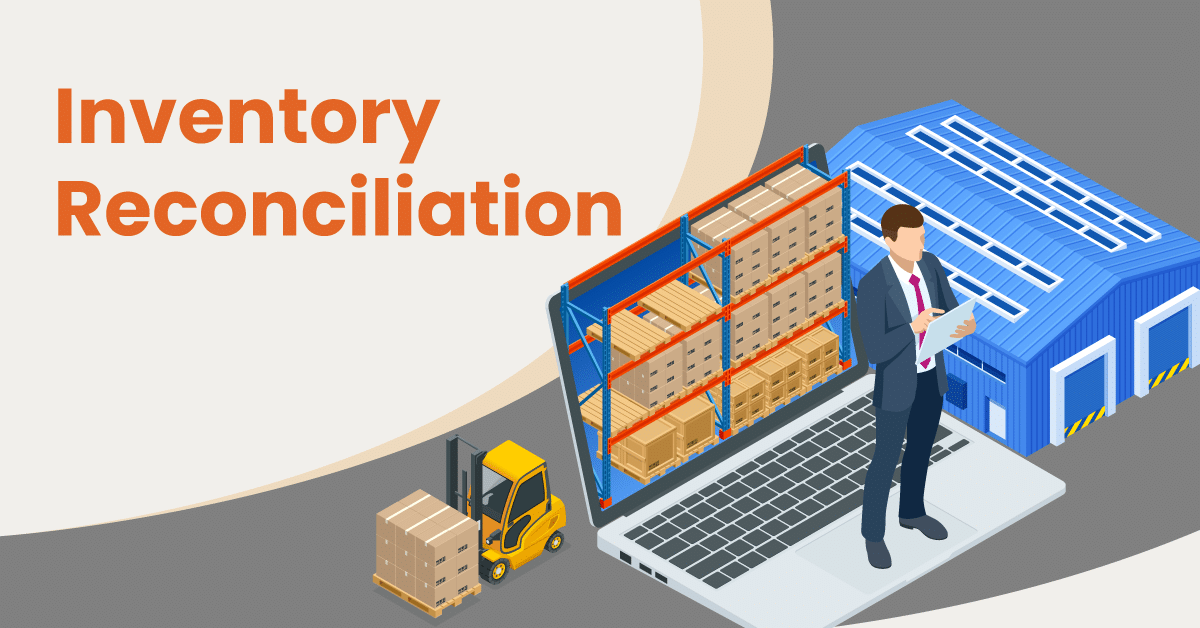
Keeping an accurate picture of your total inventory is essential for all retail companies. No matter if you own a sneaker outlet, coffee shop, or liquor store, you will need to implement some type of inventory management system to accurately track all of your products. In fact, US retailers lost a total of $94.5 billion in inventory shrinkage in 2021. One of the ways that retailers can reduce these losses is through inventory reconciliation.
Inventory reconciliation refers to counting your inventory and comparing those numbers with the counts in your computer system and financial records. There are several different methods that retailers can use to carry out this task. Here is a detailed guide on the best steps to take and why to take them.
What Is Inventory Reconciliation?
Inventory reconciliation is the process of physically tallying inventory to reconcile those numbers with the data that is in your digital inventory management system.
In other words, you have to go through the products in your retail store, as well as all of your storage areas, and add up the number of items you have for all of your different products.
There are many different methods for performing this count, from spreadsheets on a clipboard with a pencil to advanced contactless scanning through RFID technology. We’ll dive more into these details later.
Reconciliation of Inventory: Why do it?
Inventory reconciliation is one of the most important processes to ensure that your stock counts are accurate and your shrinkage is minimal. It allows you to see if the numbers in your retail point of sale and inventory management software are correct and current. It also gives you a more clear picture of your total assets.
Reduce and Remedy Any Shrinkage
The more accurate your inventory reconciliations are, and the more often you conduct them, the faster you can discover any discrepancy issues. Once those issues, if any, are found, retail owners can begin to root out why exactly their physical counts are not reconciling with the numbers in their system.
Avoid Stockouts
By doing more frequent counts, you can clear up any confusion or discrepancies in your stock. That way, you’ll reduce the chance of running into a stockout where you’re unable to provide your customers with the products they want to purchase.
This situation costs retailers an alarming amount of lost revenue per year. While it is sometimes impossible to avoid due to supply chain issues, operators can do their part to ensure they aren’t adding to the problem.
Get A Better Idea of Total Assets
Inventory is expensive! It’s impossible to keep an accurate balance sheet or ascertain the real value of a business without knowing the actual inventory counts. As such, reconciliation should be performed before any reports are prepared to evaluate a retail business. Not only does this report the health of a business to investors and stakeholders, but basic retail store accounting is also necessary for tax purposes.

How To Reconcile Inventory
You have some options when it comes to checking your inventory counts. Depending on the size of your business, the type of products you sell, and the total warehouse space, you can try the following:
Physical/Full Inventory Count
Just as it sounds, full inventory counts require a staff member, or typically a team of staff members, to count every single piece of inventory in your store and storage area. Some retailers opt to do this during business hours. Others prefer to avoid messing with the sales flow or taking up space on the retail floor, so they wait until the shop is closed.
How Often To Do A Physical/Full Inventory Count?
Physical counts can be extremely tedious and time-consuming. Consequently, many companies will do a full inventory count only once annually. This allows them to start their fiscal year with accurate financial figures.
However, retailers that are dealing with lost revenue due to shrinkage should consider doing counts more often. As previously mentioned, more frequent inventory reconciliation will help operators determine what problems they may have and how to fix them best. You can always adjust the cadence of your counts to balance labor costs with the need for reconciliation.
Cycle Count
Another popular method for inventory reconciliation is cycle counting. This refers to doing counts of specific groups of items on a rolling basis. For example, you could pick a selection of SKU numbers, item types, or bins and create a schedule for counting each of these groups over the course of a given period.
This allows retail businesses to do counting without having to shut down a store or ask employees to work overtime. In fact, cycle counting can be incorporated into an inventory reconciliation program that also uses full inventory counts. Counting the entire inventory would be a less frequent practice since cycle counts provide more up-to-date, frequent information on the state of your inventory.
How Often To Do Cycle Count?
Because this counting method is somewhat piecemeal, retailers can choose a more frequent cadence. Many businesses will do a cycle count on a weekly or monthly basis. Again, this depends on your warehousing, staffing costs, and count accuracy.
Figure Out Why You Have Inventory Discrepancies
Inventory reconciliation will alert you to any problems you have with shrinkage, theft-related losses, and inaccuracies. If you do run into issues, try to deduce if there are any patterns, recurring issues, or distinguishable factors that can narrow down what exactly is going on.
Are you finding discrepancies with the same product over and over? Do you have much more shrinkage in one retail location versus another? Looking at employee timesheets can help determine if there are corresponding patterns with inventory loss. Also, installing equipment like security cameras and performing random inventory audits can help you snuff out any fraud issues.
Modern Tools That Can Make Reconciling Inventory Easier
Inventory management is certainly a popular demand by almost all retailers. There are constantly new technologies being released to meet these demands. Here are a few to think about:
Omnichannel Software
Working with a system that ensures perpetual inventory counting will ensure that your numbers are more accurate. Multichannel retail and omnichannel POS systems update your system in real-time for every type of transaction that is taken. That means that no matter if you’re processing a return, eCommerce purchase, in-store exchange, pre-order, or third-party delivery, your system will be adjusted to reflect your real and actual inventory count accurately.
RFID Technology
The use of radio frequency identification, or RFID, technology has gained significant momentum and widespread adoption over the past several years. This is particularly true in the realm of inventory management. RFID uses radio waves to read information and relay it back to a command center.
The reason RFID tech is so helpful for retail inventory management is that it scans information without needing to have a clear line of sight. In other words, you can scan a whole box, bin, or palette of goods without needing to unload items to reach traditional barcodes.
Therefore, with an RFID reader, you can count dozens of items simultaneously, rapidly speeding up your physical inventory count time. Retail employees can also use RFID readers to find specific items in a storage facility or warehouse.
Labeling Within The Software And On Bins
Your inventory system should provide information to point you in the right direction. For example, KORONA POS has a section for bin locations right on the digital filing options. As long as bins are physically marked or filed in corresponding locations, then this feature should make inventory reconciliation much faster and easier.
Mobile / Handheld Inventory Apps
Modern cloud-based POS allows retailers to sign in to their system from anywhere that has internet. That includes mobile devices.
Many contemporary point of sale providers offer smartphone retail management apps so they can be used in warehouses and store rooms. These apps link directly to the POS inventory database, so you can scan items as you count, and these physical numbers can be reconciled with the data in your system.
Powerful Inventory Management With KORONA POS
KORONA POS has all of the best inventory management tools to make reconciliation fast, easy, and accurate. Our point of sale dashboard and Studio have native features for all retail verticals, whether you have ten items for sale or ten thousand.
In addition, we are committed to integrating the newest available features in the retail technology world, including easy RFID implementation, omnichannel perpetual inventory, and more. Our cloud-based system will allow you to track your stock from anywhere in the world. Give us a call today to speak with one of our in-house technicians to learn more!
Frequently Asked Questions About Inventory Reconciliation
Inventories are reconciled by performing physical stock counts on all items and then comparing those numbers with figures in the computer. Some businesses choose to shut down completely to do reconciliation, while others will piece out different sections. There are various tools that retailers can use to speed up the process, such as mobile inventory management, RFID, and more.
Inventory reconciliation is important because it gives retail operators a clear picture of their actual stock levels. By reconciling their inventory, business owners can make sure that they’re not experiencing too much shrinkage. This practice can also help retailers avoid stockouts and accurately assess total company value.
Businesses that do full inventory counts often choose to do a reconciliation once per year. Other businesses perform more frequent cycle counts where they choose sections of their inventory and then move on to another section when they’re finished. Retailers that have inventory reconciliation discrepancies should consider doing counts more often to root out the reasons for inconsistencies.













